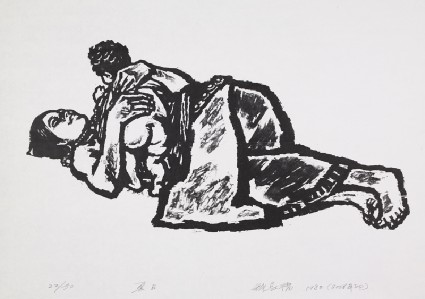Browse: 10610 objects
- Reference URL
Actions
Summer
-
Details
- Associated place
-
China (place of creation)
- Date
-
designed 1982
printed 2006
- Artist/maker
-
Zhong Changqing (born 1949) (printmaker)
- Material and technique
- woodcut, printed with oil-based ink
- Dimensions
-
sheet 48 x 71 cm (height x width)
print 48 x 71 cm (height x width)
- Material index
- Technique index
- Object type index
- No. of items
- 1
- Credit line
- Purchased, 2007.
- Accession no.
- EA2007.82
-
Further reading
Weimin He, and Shelagh Vainker, Chinese Prints 1950-2006 in the Ashmolean Museum (Oxford: Ashmolean Museum, 2007), no. 70 on p. 80, illus. p. 80
Location
-
- currently in research collection
Objects are sometimes moved to a different location. Our object location data is usually updated on a monthly basis. Contact the Jameel Study Centre if you are planning to visit the museum to see a particular object on display, or would like to arrange an appointment to see an object in our reserve collections.
Publications online
© 2013 University of Oxford - Ashmolean Museum


